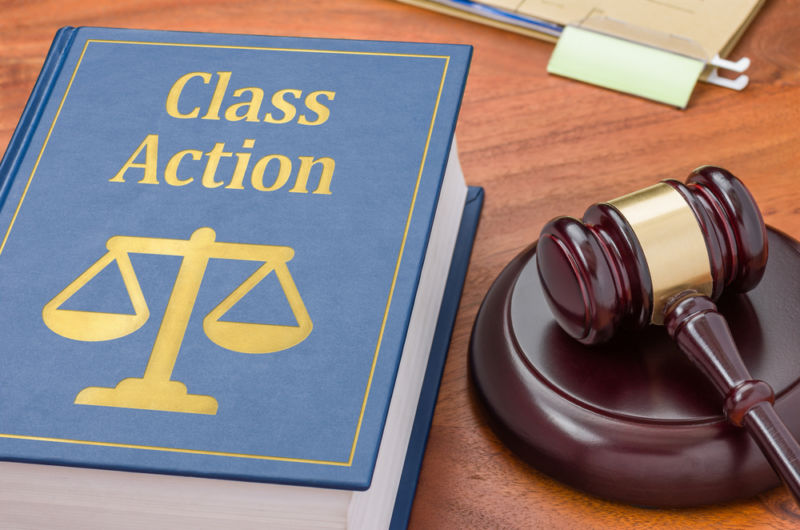Archer-Daniels-Midland Class Action Lawsuit: Your Legal Roadmap
Archer-Daniels-Midland Class Action Lawsuit: Your Legal Roadmap
Blog Article
Discovering Course Action Suits: What You Need to Know
Course action claims have come to be progressively common in today's legal landscape, with people joining pressures to seek remedy versus companies and organizations. In this discussion, we will explore the ins and outs of class action suits, losing light on their meaning, the needs for filing, and the prospective advantages and drawbacks entailed.
The Definition of Class Activity Lawsuits
A course activity claim is a lawful activity submitted by a team of individuals who have similar insurance claims versus an offender. Course activity claims are commonly brought when the number of possible complainants is also huge for individual suits to be useful.
Among the crucial elements of a class activity legal action is that the lead complainant, additionally referred to as the course agent, represents the rate of interests of all the class members. The court designates the lead plaintiff based upon their ability to rather and appropriately stand for the course. The lead complainant functions very closely with the class activity lawyer to look for and construct a solid situation compensation or various other treatments in behalf of the whole class.
In order for a class activity claim to proceed, the court has to accredit the course. This indicates that the court identifies that the lawsuit satisfies certain needs, such as numerosity (a large adequate number of course members), commonness (common concerns of law or reality), typicality (the claims of the lead complainant are common of the course), and adequacy of depiction (the lead plaintiff and course counsel are qualified of representing the course's rate of interests) As soon as the course is accredited, the legal action can move onward, and any kind of judgment or settlement got to will apply to all class participants unless they choose to opt-out.
Course action legal actions serve a necessary purpose in supplying access to justice for people who may not have the sources to pursue their insurance claims independently. They likewise advertise effectiveness in the lawful system by consolidating comparable cases into a single activity, lowering the concern on both the court and the celebrations involved.
Demands for Submitting a Class Action Claim

One more requirement is that the course needs to be completely countless. The specific number of class participants needed may vary depending on the territory and the nature of the instance. Nevertheless, it is normally expected that the course should be large sufficient that joining all the individual complainants into a single legal action is extra reliable than having numerous different suits.
Furthermore, it is necessary that the class rep, who is the private or entity bringing the claim in behalf of the class, has normal claims and defenses to those of the course members. The rep has to likewise have the ability to adequately and relatively stand for the rate of interests of the entire course.

Benefits and Drawbacks of Class Activity Suits
Class activity claims supply both advantages and drawbacks for complainants and offenders included in the lawful procedure. On the one hand, one of the considerable advantages of course activity claims is that they give a economical and efficient way for people with comparable insurance claims to pursue justice jointly. By consolidating numerous similar cases right into one claim, course actions enhance the lawful process and save time and sources for both complainants and offenders.
Another advantage of course action lawsuits is that they permit individuals with restricted sources to seek payment for their damages. In cases where the potential recuperation is small, private lawsuits might not be economically viable. Nonetheless, by joining forces in a class action, plaintiffs can merge their sources and boost their chances of acquiring a reasonable resolution.
Additionally, course activities can promote social change by holding corporations answerable for their actions. By accentuating extensive misbehavior or faulty products, course actions can pressure firms to alter their practices, improve product safety, or execute reforms.
Nevertheless, course activities also have disadvantages. One potential downside is that specific complainants might have restricted control over the litigation process and the ultimate outcome of the case. The lead complainants and their lawyers usually make vital choices on behalf of the entire course, which may not always line up with the individual passions of each class member.
Additionally, course activities can be lengthy and time-consuming, usually taking years to get to a resolution. The complexity and dimension of these suits can bring about delays and long term lawsuits, which can be irritating for both complainants and defendants looking for a timely resolution.
Actions Included in a Class Activity Suit
The process of a course action claim usually starts with the recognition of a potential class and the declaring of an issue. As soon as a team of individuals who share comparable claims against an accused is determined, the lead plaintiff, or class rep, files a complaint in support of the entire class. This issue lays out the supposed misbehavior and looks for problems or other alleviation for all members of the class.
After the problem is submitted, the court will determine whether the case satisfies the needs for class accreditation. These requirements commonly consist of numerosity (a big sufficient course), commonality (comparable legal claims), typicality (the lead plaintiff's insurance claims are depictive of the course), and competence of depiction (the lead complainant and their lawyer can adequately stand for the class's rate of interests)
If the court licenses the course, notice is given to all potential course participants, providing them the possibility to opt-out if they desire to pursue their very own individual insurance claims - Assertio class action lawsuit. If an adequate variety of class participants stay, the situation will proceed to the discovery stage, where both sides collect evidence and details appropriate to the cases
Complying with discovery, the celebrations might participate in settlement arrangements or proceed to test. If the situation mosts likely to test and the course dominates, the court will certainly figure out the appropriate problems or relief to be awarded to the class participants.
Recent Landmark Course Action Suits
With a solid understanding of the steps associated with a course activity lawsuit, it is currently crucial to analyze some current spots situations that have made a significant influence in the legal landscape. Assertio class action lawsuit. These cases have not only shaped the method class action suits are performed yet have actually additionally caused changes in different sectors
One such landmark situation is the Volkswagen emissions scandal, which brought about the biggest class activity negotiation in automotive background. In 2015, it was disclosed that Volkswagen had set up software in their lorries to cheat exhausts examinations. This deception influenced countless consumers worldwide, leading to a course action claim. The negotiation gotten to in 2016 amounted to roughly $15 billion, making up afflicted vehicle proprietors and enforcing penalties on Volkswagen.
One more remarkable situation is the Johnson & Johnson talc lawsuit. Countless females filed claims versus the company, asserting that their talcum powder products triggered ovarian cancer cells. In 2018, a jury awarded $4.7 billion in problems to 22 complainants. This case increased problems about the security of talc and prompted Johnson & Johnson to modify their item labeling.
These recent site instances show the power of course action lawsuits in holding companies answerable for their activities and looking for justice for affected individuals. They function as instances of how course activity claims can bring around substantial modifications and secure the civil liberties of customers.
Verdict
To conclude, course activity lawsuits are a lawful device that permits a team of people to jointly look for justice for a typical complaint. While they use a number of advantages such as effectiveness and cost-effectiveness, there are likewise disadvantages such as potential for limited compensation and lengthy lawful process. Recognizing the needs and actions involved in submitting a course activity suit is critical for people seeking to pursue this lawful method. Recent landmark course activity claims have highlighted the significance of such instances in supporting for consumer rights and company liability.
One of the vital aspects of a BioVie class action lawsuit course action lawsuit is that the lead complainant, also recognized as the class representative, stands for the interests of all the course members.In order for a course action claim to proceed, the court needs to certify the course. This means that the court establishes that the claim meets specific requirements, such as numerosity (a big enough number of course members), commonness (usual questions of regulation or fact), typicality (the cases of the lead complainant are regular of the class), and competence of representation (the lead plaintiff and course counsel are capable of standing for the class's rate of interests) Once the class is accredited, the lawsuit can move ahead, and any kind of judgment or settlement got to will use to all class members unless they pick to opt-out.
The procedure of a class action legal action commonly starts with the recognition of a prospective class and the filing of a grievance.
Report this page